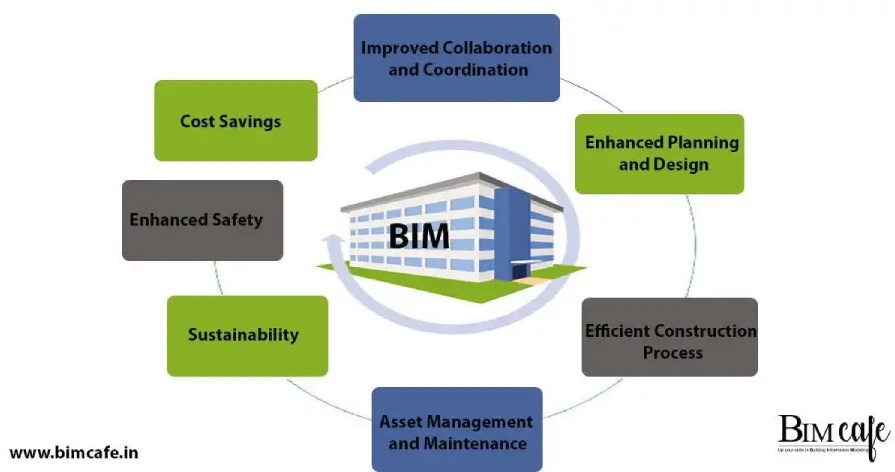In the ever-evolving world of urban development, Building Information Modeling (BIM) stands as a beacon of innovation, transforming the way we conceive, design, and manage infrastructure projects. As a seasoned architect and a BIM expert, I’ve witnessed firsthand the remarkable impact of BIM on metro rail projects. It’s a subject worth exploring in depth, especially considering the myriad benefits BIM brings to the table, from enhancing design accuracy to boosting operational efficiency.
Embracing the Full Potential of BIM
Building Information Modeling is more than just a tool for creating detailed 3D models—it’s a comprehensive process that enables us to manage information throughout a project’s lifecycle, from the initial design to the final maintenance phase. The integration of BIM in metro rail projects is particularly vital. Why? Because the complexity of such projects demands impeccable precision and coordination, qualities that BIM enhances exponentially.
For instance, consider the challenge of integrating various systems like electrical, plumbing, and ventilation in the confined underground spaces of a metro system. BIM facilitates the creation of virtual simulations that predict and resolve clashes before they occur on site. This preemptive approach not only saves time but also significantly cuts down costs, which are often inflated by unforeseen issues during construction.
Case Studies and Expert Insights
Diving into specific case studies, the use of BIM in projects such as the expansion of the London Underground reveals its capacity to streamline complex workflows and enhance collaborative efforts across diverse teams. By allowing for a virtual walkthrough of the project, BIM enables stakeholders to visualize the end product in a way traditional blueprints never could. This clarity fosters more informed decision-making and facilitates a more agile project management style.
Moreover, conversations with fellow BIM experts underscore the sentiment that BIM technology is evolving. With the advent of AI and machine learning, BIM tools are becoming smarter. For example, predictive analytics can now forecast project delays or budget overruns, allowing teams to mitigate risks before they manifest into larger problems.
In-depth Analysis of BIM Benefits
The benefits of BIM extend beyond mere construction efficiency. One of the more significant advantages is the enhanced safety it offers. By simulating construction processes and operations in a virtual environment, BIM helps identify potential safety hazards, thus reducing the risk of accidents during construction. Furthermore, this technology plays a crucial role in the sustainable design of metro systems. BIM’s ability to model energy consumption and waste management helps ensure that projects adhere to the highest standards of environmental sustainability.
On the financial side, BIM’s detailed resource allocation and timeline mapping allow for a more meticulous budget control, minimizing the common plague of cost overruns in large-scale projects. The granularity of a BIM model also aids in long-term maintenance and management, ensuring that the infrastructure remains robust and reliable over its intended lifespan.
Addressing Challenges and Enhancing User Experience
While the advantages are plentiful, it’s also crucial to address the challenges that come with implementing BIM. Resistance to technological adoption and the steep learning curve associated with advanced BIM tools can hinder progress. Therefore, it is essential to conduct regular training sessions and workshops to keep all team members up to speed with the latest technological advancements.
To further enhance the user experience of our content and provide a seamless flow of information, I recommend visiting our detailed discussion on the importance of BIM technology in metro rail projects. Additionally, for a broader understanding of how BIM can transform other areas of construction and design, explore our main BIMcafe page.
Conclusion: The Future of Urban Development with BIM
As we look to the future, the integration of BIM in urban infrastructure projects, particularly metro rail systems, promises not only to refine the way these projects are executed but also to redefine the potential of urban spaces. BIM’s ability to bring together accuracy, efficiency, and sustainability marks a new era in construction—one where technology and human ingenuity converge to create smarter, safer, and more sustainable cities.
In conclusion, embracing BIM in metro rail projects isn’t just about keeping up with technological trends—it’s about taking a proactive step towards crafting a future where urban infrastructure is as dynamic as the populations it serves. As architects and engineers, it’s our duty to continue pushing the boundaries of what BIM can achieve, ensuring that our urban landscapes are built for tomorrow’s world.



